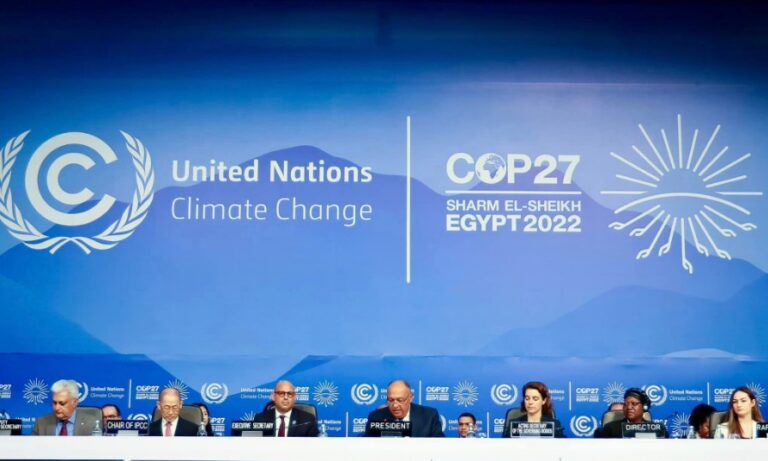Disappointment prevails at the end of COP27 in Sharm el Sheik. The countries that took part in the most important meeting of world leaders to find solutions to combat global warming failed to reach an agreement on reducing emissions. Or even on phasing out all fossil fuels. The COP27 results are according to many quite disappointing.
The only positive note, reached after strenuous negotiations, was the establishment of a fund, Loss and Damage, for the poorest countries that have suffered the devastating effects of climate change. However, the decision of all the technical details of this fund, starting with who will finance it and where the resources will go, will have to await the outcome of the negotiations that will take place during 2023.
“This COP has taken a step towards justice. I welcome the decision to establish a loss and damage fund and to make it operational in the coming period. Clearly,” commented UN Secretary-General Antonio Guterres, “this will not be enough, but it is an absolutely necessary political signal.
Table of Contents
COP27 results: the lack of agreement on fossil fuels
While it is true that the final document approved at the Sharm el Sheik COP emphasises that in order to reach the reaffirmed goal of limiting global warming to 1.5 degrees from pre-industrial levels agreed at COP26 in Glasgow, it is necessary to reduce emissions by 43% by 2030 compared to 2019, there is a lack of an agreement on phasing out fossil fuels.
And current projections show that the countries’ commitments are not sufficient. Not least because many states have not yet defined a decarbonisation roadmap. Those who expected a step forward from the COP26 decisions, especially with regard to concrete implementation plans for the targets, are unsatisfied.
Probably, the presence of the Gulf countries at COP27, whose economic strength is based on fossil fuel production systems, played a role in dampening the push for an agreement to ban emissions and the use of fuels.
Another factor that undoubtedly had a role in the lack of an agreement on fossil fuels was the energy crisis deriving from Russia’s invasion of Ukraine. Which not only forced many countries (especially Europeans) to look for alternative energy sources in a short period of time. But also pushed commodity prices sky-high causing unprecedented inflation in recent decades.
COP27 results: the “Loss and Damage” Fund
As mentioned, the positive note of this year’s COP is the approval of a Loss and Damage fund. Which was however only reached in the final hours of the meeting. Just in time to prevent it from the declaration of a total failure.
An understanding celebrated by many nations of more backward economies that have not contributed in the past to the emissions that have caused the climate emergency. But that often, for reasons of geography and lack of infrastructure, pay the consequences more than those that have benefited from industrial and economic development.
There has not been a point of convergence for about 30 years. However, despite the significance of this agreement, important details are not yet established.
Returning to the overall balance sheet of COP27, another very positive fact was that African countries, which until now had played a marginalised role in international climate negotiations, participated.
Is the COP instrument still suitable?
The poor performance of the COP27 raises the question of whether these large choral meetings are still the right instrument for solving the climate crisis.
Action plans and concrete commitments are now necessary. The COP format dates back 30 years, when the first meeting took place in Rio de Janeiro in 1992. The first COPs were much smaller and focused on government negotiations to secure global climate agreements.
Since the Paris Agreement, however, there has been a turnaround. Since then banks, businesses, and industries have been encouraged to join the effort to reduce emissions. This, to keep global warming well below 2°C, possibly within 1.5°C. This triggered a system of round table discussions where various promises were made to this effect by different governments.
However, this year, an international team of scientists reported that in 2022 emissions remained at such record levels. If they persist, there is now a 50% chance that the temperature increase will exceed 1.5°C in nine years.












